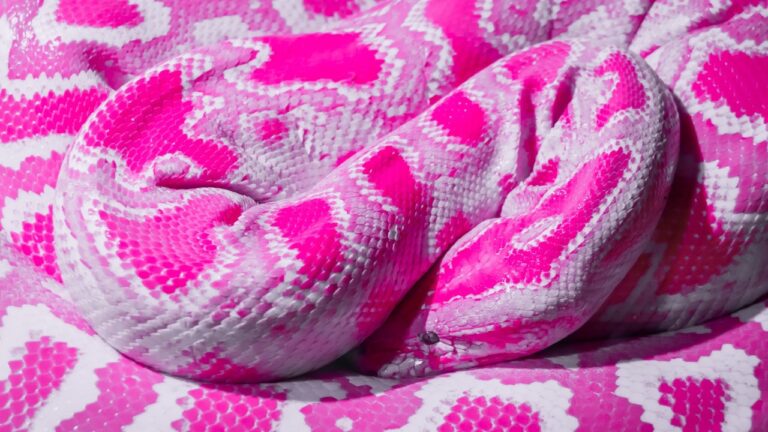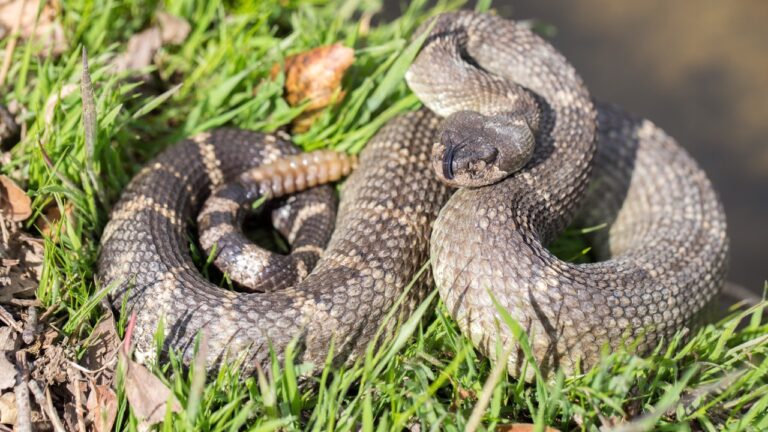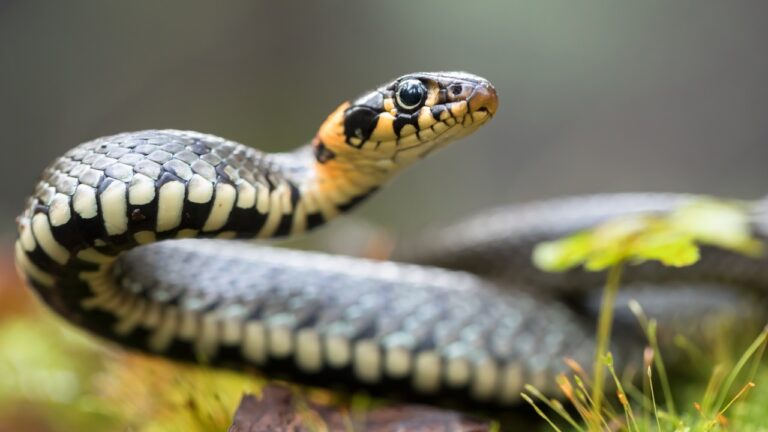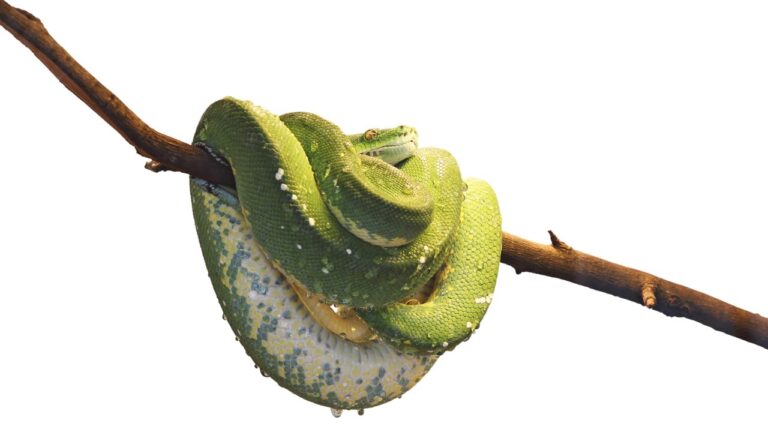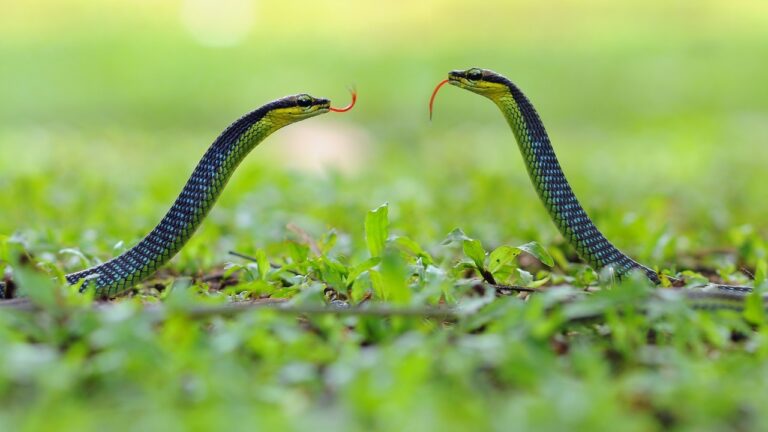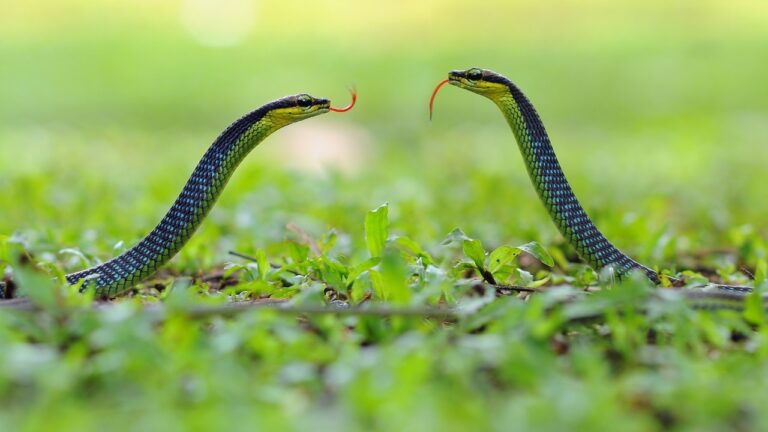Optimize Your Snakes Nutrition with Expert Feeding Schedules
Importance of proper snake feeding behavior
When it comes to keeping a pet snake, ensuring proper feeding behavior is of utmost importance. Snakes are unique creatures with distinct dietary needs, and their nutrition plays a critical role in their overall health and well-being. By understanding and optimizing their feeding habits, snake owners can ensure that their slithery companions thrive in captivity.
Snakes have evolved over millions of years with specialized feeding mechanisms that allow them to consume prey much larger than themselves. Their ability to swallow whole animals is truly fascinating, but it also means that they have specific requirements when it comes to their diet. Proper snake feeding behavior is crucial for maintaining their health, growth, and longevity.
In the wild, snakes exhibit a variety of feeding behaviors depending on their species and habitat. Some snakes are ambush predators, lying in wait for their prey to come within striking distance, while others actively hunt and pursue their meals. Understanding these natural feeding habits is essential for replicating a suitable feeding environment in captivity.
Numerous factors influence snake feeding behavior, including the species, age, and size of the snake, as well as its environment and overall health. It is essential for snake owners to be aware of these factors to ensure they provide a feeding routine that meets their pet’s nutritional requirements. A well-balanced and expertly planned feeding schedule is the cornerstone of optimal snake nutrition.
In this article, we will delve into the intricacies of snake feeding behavior, discussing the various factors that influence it. We will also explore the importance of a proper feeding schedule and offer expert tips to help snake owners optimize their pet’s nutrition. Whether you are a seasoned snake enthusiast or a novice reptile keeper, this comprehensive guide will equip you with the knowledge and tools necessary to ensure your snake thrives in captivity. So, let’s slither our way into the world of snake feeding and unlock the secrets to a happy and healthy reptilian diet.
Understanding Snake Feeding Behavior
Snakes are fascinating creatures with unique feeding habits that have evolved over millions of years. To ensure the health and well-being of your snake, it’s crucial to understand their natural feeding behavior and the various factors that influence it.
Natural Feeding Habits of Snakes
In the wild, snakes are highly efficient predators, relying on their specialized feeding mechanisms to capture and consume prey. Whether they are constrictors or venomous snakes, their feeding habits are designed to maximize their chances of survival.
Constrictor snakes, such as pythons and boas, use their muscular bodies to squeeze and suffocate their prey. They typically ambush their victims, striking with lightning speed and coiling their bodies around them until they can no longer breathe.
Venomous snakes, on the other hand, have a different approach. They use their venom to immobilize their prey, injecting a potent cocktail of toxins that quickly incapacitate their victims. Once the prey is paralyzed, the snake can safely consume it.
Factors Influencing Snake Feeding Behavior
Several factors can influence the feeding behavior of snakes, both in captivity and in the wild. Understanding these factors can help snake owners optimize their feeding schedules and ensure their pets receive the nutrition they need.
One significant factor is the snake’s size and age. Young snakes have different dietary requirements compared to adult snakes. Juveniles may need to eat more frequently to support their rapid growth, while adults may require larger prey items less frequently.
The availability of prey in their environment also plays a crucial role. In the wild, snakes have a diverse range of potential prey items to choose from, including rodents, birds, and even other reptiles. In captivity, snake owners must ensure they provide a varied diet that closely resembles the snake’s natural prey.
Additionally, environmental factors such as temperature and humidity can influence snake feeding behavior. Snakes are ectothermic, meaning their body temperature is regulated by their environment. Optimal temperature and humidity conditions are essential for snakes to digest their food efficiently and maintain their overall health.
Understanding the natural feeding habits of snakes and the factors that influence their feeding behavior is the first step in optimizing their nutrition. By providing an environment that mimics their natural habitat and tailoring their feeding schedule to their specific needs, snake owners can ensure their pets thrive.
To learn more about snake feeding habits and expert tips for optimal snake nutrition, continue reading our snake feeding guide.
Feeding Schedule for Snakes
When it comes to ensuring the optimal nutrition for your beloved snake, establishing a well-structured feeding schedule is of utmost importance. A proper feeding schedule takes into account various factors such as the snake’s age, size, and the types of prey it consumes. By adhering to a well-planned feeding routine, you can help maintain your snake’s health and well-being.
Age and Size Considerations
Snake feeding schedules must be tailored to the specific needs of each individual snake, and age and size are crucial factors to consider. Growing snakes have different nutritional requirements compared to adult snakes.
For young snakes, it is recommended to feed them more frequently, as they are in a period of rapid growth and development. Generally, hatchlings and juveniles should be fed every 5 to 7 days, while adult snakes can be fed less frequently, typically every 7 to 14 days.
It’s important to note that the size of the prey should be appropriate for the snake’s size. Feeding a snake prey that is too large can lead to digestion issues, while prey that is too small may not provide sufficient nutrition. Snake feeding charts can be helpful in determining the appropriate prey size based on the snake’s size.
Frequency of Feeding
Determining the snake feeding frequency depends on factors such as the snake’s species, age, and metabolism. Each snake species has its own unique feeding requirements. Some snakes, like pythons, may prefer larger meals at longer intervals, while others, like corn snakes, may require smaller meals more frequently.
To establish an appropriate feeding schedule, it is important to research the specific needs of your snake’s species. Consulting a snake feeding guide or seeking advice from a reptile veterinarian can provide valuable insights into the ideal feeding frequency for your snake.
Types of Prey
Snakes are carnivores and their diet primarily consists of live or frozen prey. The snake feeding routine should include a variety of prey items to ensure a balanced diet. Common prey items for snakes include rodents, birds, and even other reptiles.
The size of the prey should be appropriate for the snake’s size and age. It is recommended to offer prey that is about the same width as the snake’s widest body part. This ensures that the snake can swallow the prey without difficulty.
When selecting prey, it is important to ensure that it is healthy and free from any diseases or parasites. Feeding your snake with sick or compromised prey can have negative consequences on its health. Always source prey from reputable suppliers to minimize the risk of introducing any health issues to your snake.
In conclusion, establishing a well-planned snake feeding schedule is crucial for maintaining the nutrition and overall well-being of your snake. By considering the age and size of your snake, feeding it at the appropriate frequency, and offering a variety of prey items, you can provide the optimal nutrition that your snake needs to thrive. Remember to consult reliable resources, such as snake feeding tips and guides, to ensure you are following the best practices for your snake’s dietary needs.
Signs of Healthy Feeding Behavior
When it comes to your snake’s well-being, monitoring their feeding behavior is crucial. By paying attention to certain signs, you can ensure that your slithery friend is receiving the proper nutrition they need to thrive. Here are a few key indicators of healthy feeding behavior to look out for:
Consistent Appetite
A snake with a healthy feeding routine will exhibit a consistent appetite. They will eagerly accept food during their designated feeding times without any hesitation or reluctance. If your snake consistently refuses to eat or shows disinterest in food, it may be a sign of an underlying health issue or stress. In such cases, it is advisable to consult a veterinarian or an experienced reptile specialist for guidance.
Healthy Weight Maintenance
Maintaining a healthy weight is essential for snakes, just as it is for any other animal. Regularly monitoring your snake’s weight can help you gauge their overall health and well-being. A healthy snake will have a well-rounded body shape without any visible signs of being underweight or overweight. You can consult a snake feeding chart or guide for weight ranges specific to your snake’s species to ensure they are within a healthy range.
Normal Shedding Patterns
Shedding is a natural process for snakes as they grow, and healthy feeding behavior plays a significant role in this process. Snakes that are receiving proper nutrition will shed their skin in one complete piece, with minimal difficulty. However, inadequate nutrition or irregular feeding schedules can lead to incomplete or problematic shedding. If you notice difficulties in shedding or frequent stuck shed, it may be an indication of improper feeding habits.
By keeping an eye out for these signs of healthy feeding behavior, you can ensure that your snake is on the right track towards optimal nutrition and well-being. Remember, maintaining a balanced diet and suitable feeding routine is essential for their overall health and longevity.
If you’re experiencing any concerns with your snake’s feeding behavior, you may also find our snake feeding problems article helpful. Stay tuned for the next section, where we’ll explore common feeding issues and their solutions!
Common Feeding Issues and Solutions
Feeding your snake can sometimes be a challenging task. Despite your best efforts, you may encounter common feeding issues that can leave you feeling frustrated and concerned for your scaly friend. In this section, we will explore some of these issues and provide practical solutions to help you optimize your snake’s nutrition.
Refusal to Eat
One of the most common feeding issues snake owners face is when their slithery companion refuses to eat. It can be disheartening to offer a meal to your snake, only to have it turn its head away. But before you panic, it’s important to understand that there are several reasons why a snake may refuse to eat.
Sometimes, a snake may simply be going through a natural period of reduced appetite. This can occur during their shedding process or when they are preparing to mate. In such cases, it is best to monitor their behavior and offer food again once they have passed through this phase.
Another common reason for refusal to eat is stress. Snakes are sensitive creatures, and changes in their environment, such as a recent move or the introduction of a new enclosure, can cause them to feel anxious and lose their appetite. In these situations, it is crucial to create a calm and secure environment for your snake, ensuring that they have adequate hiding spots and a comfortable temperature.
If your snake continues to refuse food for an extended period, it may be a sign of an underlying health issue. In such cases, it is advisable to consult a veterinarian who specializes in reptiles to rule out any medical conditions that may be affecting your snake’s appetite.
Overfeeding
While it may be tempting to shower your snake with an abundance of food, overfeeding can lead to a whole set of problems. Snakes, like any other living creature, require a balanced diet to maintain their health. Feeding them excessively can result in obesity, which can have serious consequences for their overall well-being.
Overfeeding can also lead to regurgitation, another common feeding issue in snakes. When a snake is fed too much or too frequently, its digestive system can become overwhelmed, causing it to regurgitate the prey item. This can be both distressing for the snake and a cause for concern for the owner.
To avoid overfeeding, it is essential to establish a proper feeding schedule for your snake based on its age, size, and species. Following a snake feeding chart or guide can help you determine the appropriate prey size and frequency of feeding. It’s important to strike a balance between providing enough nutrition and not overloading your snake’s digestive system.
Regurgitation
Regurgitation is when a snake brings up its food shortly after consuming it. This can be a worrying sight for any snake owner, but it is not uncommon and can happen for various reasons.
One of the primary causes of regurgitation is improper prey size. If the prey item is too large for the snake to swallow comfortably, it may trigger regurgitation. It is crucial to select prey that is appropriate for your snake’s size and species, ensuring that it can be swallowed without difficulty.
Another common cause of regurgitation is handling the snake too soon after a meal. Snakes require time to digest their food properly, and any disturbance during this period can disrupt their digestive process. It is recommended to wait at least 48 hours after feeding before handling your snake to minimize the risk of regurgitation.
If regurgitation becomes a persistent issue, it is advisable to consult a reptile veterinarian. They can help determine if there are any underlying health conditions or dietary deficiencies contributing to the problem.
Remember, maintaining a healthy feeding routine for your snake is crucial for its overall well-being. By addressing common feeding issues promptly and following proper snake feeding techniques, you can ensure that your scaly friend receives the optimal nutrition it needs to thrive.
For more information on snake feeding issues and solutions, check out our snake feeding problems page.
Expert Tips for Optimal Snake Nutrition
When it comes to ensuring your snake’s health and well-being, optimal nutrition is of utmost importance. To help you achieve this, we’ve compiled a list of expert tips that will guide you in providing the best diet for your scaly companion.
Prey Size Selection
Selecting the right prey size for your snake is crucial for its overall health and growth. It’s essential to match the prey size to the snake’s size and age. Offering prey that is too large can result in digestive issues, while prey that is too small may not provide the necessary nutrients.
As a general rule, the prey item should be about the same width or slightly larger than the widest part of your snake’s body. This allows for proper digestion and minimizes the risk of regurgitation. Keep in mind that different snake species have different preferences and requirements, so it’s essential to research specific feeding guidelines for your particular snake.
Proper Handling During Feeding
Proper handling during feeding is often overlooked but plays a significant role in ensuring your snake’s well-being. When feeding your snake, it’s crucial to use tweezers or specialized feeding tongs to present the prey item. This not only helps prevent accidental bites but also reduces the risk of your snake associating your hand with food.
Gently maneuver the prey item in front of your snake’s mouth, allowing it to strike and initiate the feeding process. Avoid any sudden movements that may startle or stress your snake during this crucial moment. Remember, a calm and stress-free feeding environment promotes healthy feeding behavior.
Monitoring Feeding Responses
Observing your snake’s feeding responses is vital for gauging its nutritional needs and overall health. Pay attention to how your snake interacts with the prey item. Healthy snakes will exhibit a strong feeding response, striking the prey with precision and consuming it without hesitation.
If your snake consistently refuses to eat or displays a lack of interest in prey, it may be a sign of an underlying health issue or stress. In such cases, it’s important to consult a veterinarian or reptile specialist for guidance.
On the other hand, overfeeding can lead to obesity and related health problems. It’s important to strike a balance and provide a diet that meets your snake’s nutritional requirements without excess. Snake feeding charts and feeding guides can be valuable resources in determining the appropriate feeding frequency and portion sizes for your snake.
By following these expert tips for optimal snake nutrition, you are well on your way to ensuring your scaly companion’s health and well-being. Remember to always stay informed and seek professional advice when needed. Your dedication to providing a nutritious diet will contribute to a thriving and contented snake.
Internal links: snake feeding chart, feeding guides
Conclusion
In conclusion, understanding and optimizing your snake’s nutrition is crucial for their overall health and well-being. By following expert feeding schedules and considering factors such as age, size, and prey selection, you can ensure that your snake receives the proper nutrients it needs to thrive.
Throughout this article, we have explored the importance of proper snake feeding behavior and delved into the natural feeding habits of snakes. We have also discussed the various factors that can influence snake feeding behavior, such as environmental conditions and stress levels.
Establishing a feeding schedule for your snake based on their age and size is essential. It is important to strike a balance between feeding frequency and prey size, taking into account the metabolic rate and digestive capabilities of your snake. Remember to refer to a snake feeding chart or snake feeding guide to determine the appropriate prey size for your specific snake species.
Monitoring your snake’s feeding responses and keeping an eye out for signs of healthy feeding behavior, such as a consistent appetite, proper weight maintenance, and normal shedding patterns, will help you assess their overall well-being.
However, it is not uncommon to encounter common feeding issues such as refusal to eat, overfeeding, or regurgitation. If you encounter any of these problems, it is important to address them promptly. Snake feeding problems can have underlying causes, including stress, improper prey size, or incorrect handling during feeding.
To optimize your snake’s nutrition, consider expert tips such as proper prey size selection, ensuring a stress-free environment during feeding, and monitoring their feeding responses. These tips can help prevent potential issues and promote a healthy feeding routine for your snake.
In summary, by understanding the unique feeding habits of snakes and implementing an appropriate snake feeding schedule, you can optimize your snake’s nutrition and contribute to their overall well-being. Remember to stay informed, seek expert advice when needed, and always prioritize your snake’s health and happiness.


